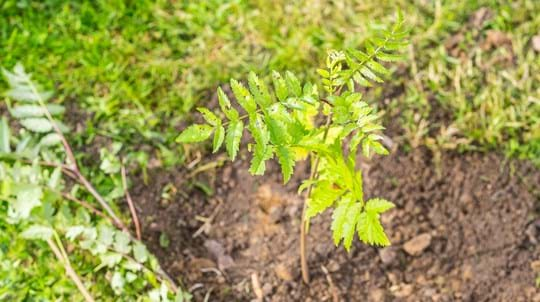
Plant trees
Which species to plant
Different trees have different purposes and needs. Choose your species according to the land you have and what you want from your trees.

Content manager
Whether you want screening to hide an unpleasant view, privacy from neighbours and passers-by, or just want to green up your garden quickly, there’s a fast growing native tree to suit your space. Check out our recommendations to find the right one for you.
Trees bring so much to a garden. They can create drama and structure. They give us a secluded spot to unwind and enjoy the beauty of the changing seasons. Many native trees offer beautiful flowers and colourful fruits. And they’re vital havens for wildlife. And at just £10.95 a sapling from our tree shop, you’ll see a return on your investment in no time.
Native broadleaf trees are best for UK wildlife as they evolved together and support each other most effectively. Native trees are more resilient and easier to grow and maintain too.
Before you pick a tree for your garden, think about the following factors.
Will the tree bump into anything when full-grown, like telephone or power lines? How wide will the canopy spread? Will it spill over into neighbouring gardens or a road? Will it cast a lot of shade and will that be an advantage or a problem? Bear in mind that you can prune to control height if you have the time and the tools.
Think about where you’re planting. Your tree might be tiny now but roots and branches may eventually spread beyond your property. Could limbs fall onto buildings or cars? Could roots damage walls or patios? Will fallen leaves clog up a pond?
When choosing a species, check preferred soil type, sunlight needs and distance from other established trees. If you’re unsure, take a look around your neighbourhood to see which species are thriving.
What do you want from your trees? Year round colour, a wild harvest, a hub for wildlife, a tree for coppicing?
Measurements stated below are approximate and for trees planted in conditions that suit them well.
Every tree purchased from the Woodland Trust shop funds our vital work to plant and protect trees and woods across the UK.
Alder grows in a pyramid shape with dark green, glossy, rounded leaves. In early spring it produces yellow catkins. These are followed by clusters of woody fruits that look a bit like pinecone baubles on the bare branches over winter. Alder improves soil fertility where it grows, so it’s great for your garden.
Value to wildlife: It’s the only food plant for the caterpillars of several moths, including the alder kitten and blue bordered carpet moth. Catkins provide an early source of nectar and pollen for bees, and the seeds are eaten by the siskin, redpoll and goldfinch.
Preferred conditions: Excels in damp areas, tolerates most conditions and soils. On dry soils it grows as a bush.
Full height: 20 metres.
Growth rate: 60cm each year.
Rowan has silvery-brown bark and leaves which turn a lovely burnt red in autumn. In spring you’ll find clusters of creamy-white flowers followed by orange-red berries in autumn. You can even use the fruit to make rowan jelly. It’s slim so makes a perfect garden specimen tree.
Value to wildlife: The leaves are eaten by caterpillars of moths, including the larger Welsh wave and autumn green carpet. Its flowers provide pollen and nectar for bees and other pollinating insects. The berries are a rich source of autumn food for birds, especially blackbird, mistle thrush and redwing.
Preferred conditions: This hardy species will grow in most soils but prefers light, well-drained, humus-rich soil.
Full height: 8-15 metres.
Growth rate: 20-40cm each year.
A smaller tree makes a great choice if you have height restrictions. Growing hazel also means you can look forward to the tasty nuts, sharing them with squirrels and dormice. Try our hazelnut butter recipe! In spring, hazel is laden with pretty 'lambs’ tail' catkins.
Value to wildlife: Hazel dormice eat the nuts and caterpillars they find on the leaves. Hazelnuts are also eaten by woodpeckers, nuthatches, jays, red squirrels, wood mice and bank voles.
Preferred conditions: A shade-tolerant tree for non-acid, well-drained to moist soils. Can be planted as part of a native hedgerow.
Full height: 10 metres or more.
Growth rate: 40-60cm each year.
The wavy-edged leaves of beech turn a coppery-bronze in autumn. The crisp leaves stay on the tree throughout winter until they are pushed off by new leaf growth the following spring. Beech is a good alternative to an evergreen hedge.
Value to wildlife: The leaves are eaten by the caterpillars of the barred hook-tip, clay triple-lines and olive crescent moths. The seeds are eaten by mice, voles, squirrels and birds.
Preferred conditions: Grows well in sun or partial shade on almost any well-drained soil. Not suitable for waterlogged sites.
Full height: 40 metres.
Growth rate: 30-60cm each year.
Silver birch stands out with its distinctive silvery-white peeling bark. It has triangular-shaped leaves on elegant sweeping branches. They turn yellow then golden in autumn, bringing striking colour to your garden. Look out for the catkins from spring to autumn.
Value to wildlife: Small birds like long-tailed tits and siskins are attracted by the abundant seeds and insects that it hosts.
Preferred conditions: Prefers sandy or acidic soils although can grow in most conditions.
Full height: 15-20 metres.
Growth rate: 40cm each year.
A species of native willow, osier is bushy, making it ideal for beds and borders. It reaches its full height in just a few years. The flowers are green and yellow catkins appear in late winter to early spring, giving your garden some early colour. Also known as the basket willow, it has been used for weaving throughout Europe for generations.
Value to wildlife: Many moth caterpillars feed on the leaves, including the lackey, herald and red-tipped clearwing. The catkins provide an important source of early nectar and pollen for bees and other insects. Being bushy, the branches make good nesting sites for birds.
Preferred conditions: Often found in wet situations such as riversides. Osier doesn’t grow well in alkaline soils and prefers full sunlight.
Full height: 7 metres.
Growth rate: 100cm each year.
If you're looking for privacy or screening, you might have your heart set on a tree that’s in leaf all year round. Holly can be grown in a dense hedge, as a shrubby bush or to its full 15 metre height, but is a slower-growing species at an estimated 10-20cm each year.
Juniper also grows at 10-20cm each year. This evergreen conifer - one of only three native to the UK - grows up to 10 metres tall.

Whether you need a screen, hedge or centrepiece, we have beautiful native trees to give your garden interest all year round. Delivery is free.
Shop trees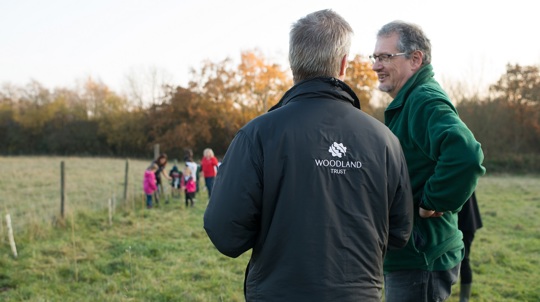
Plant trees
Thinking of planting trees, but need some help? Explore advice on choosing the right tree species, location, how to plant and aftercare.
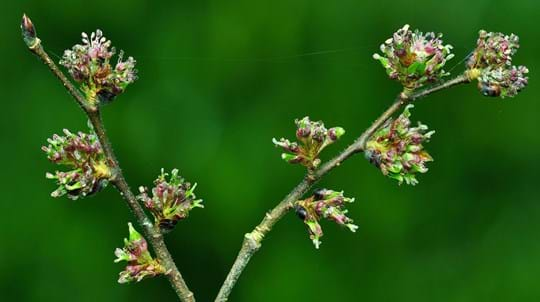
Trees woods and wildlife
Our A-Z guide to British trees from native species to naturalised and widely planted non-natives.
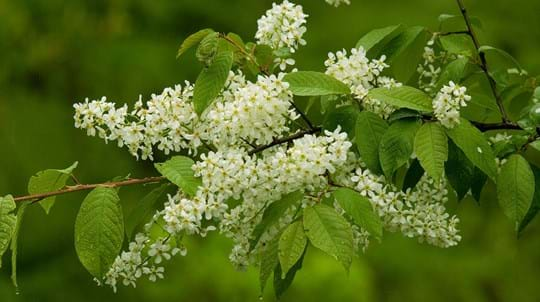
Blog
Helen Keating • 08 Nov 2021
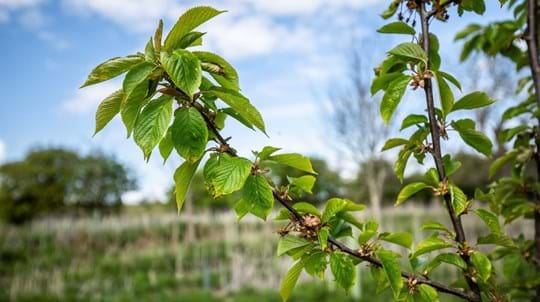
Plant trees
If you’re looking to plant trees, we have the trees, grants and funding schemes to help.
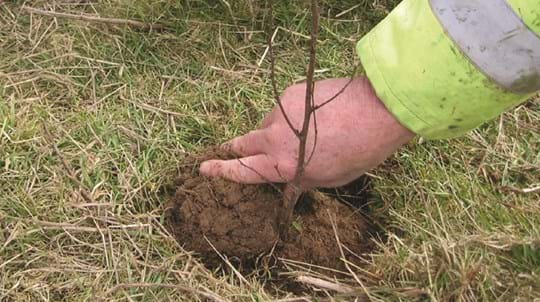
Plant trees
Follow our guide to three of the most successful ways to plant.

Plant trees
Once your trees are in the ground it’s important to care for them, especially in the first few years.